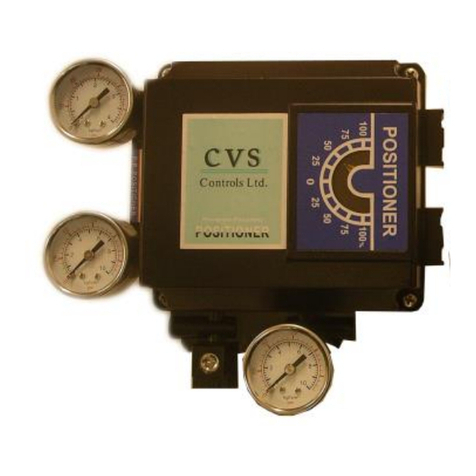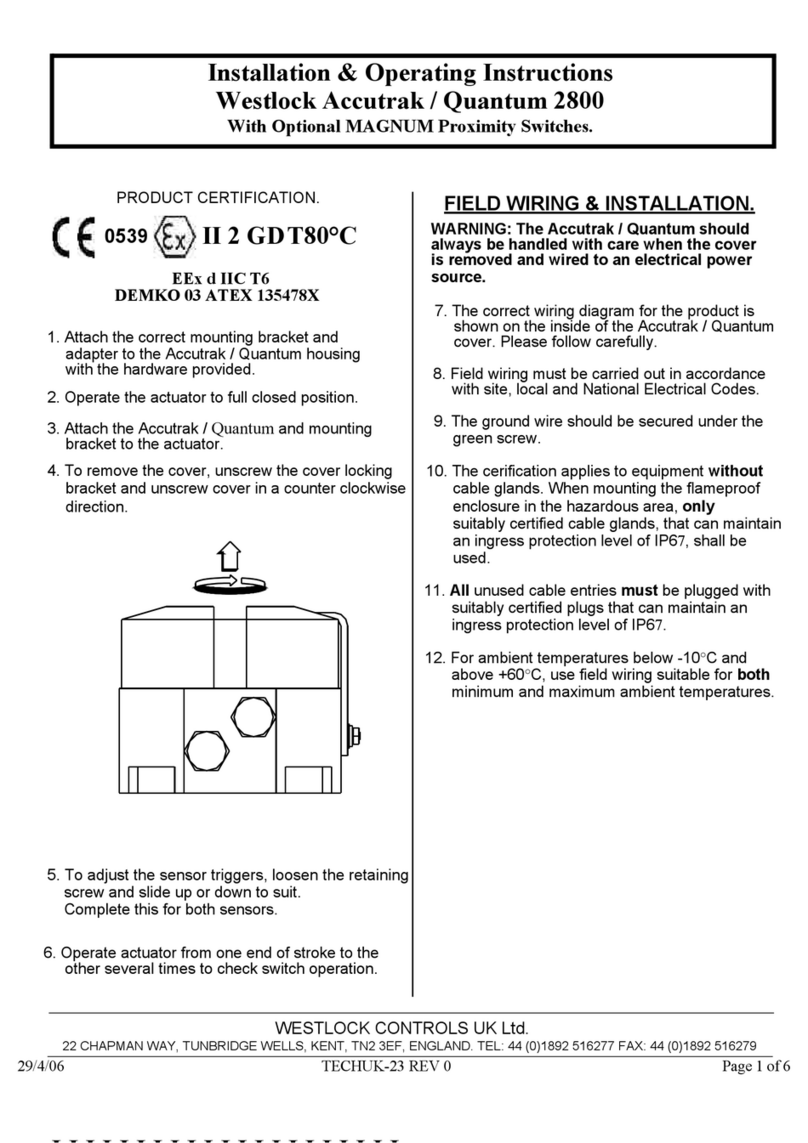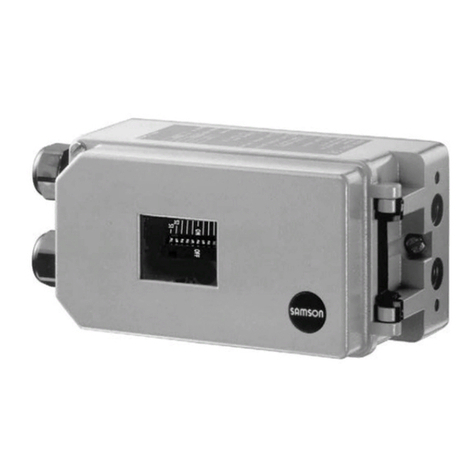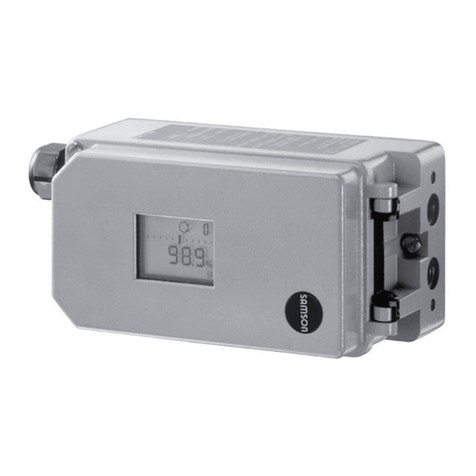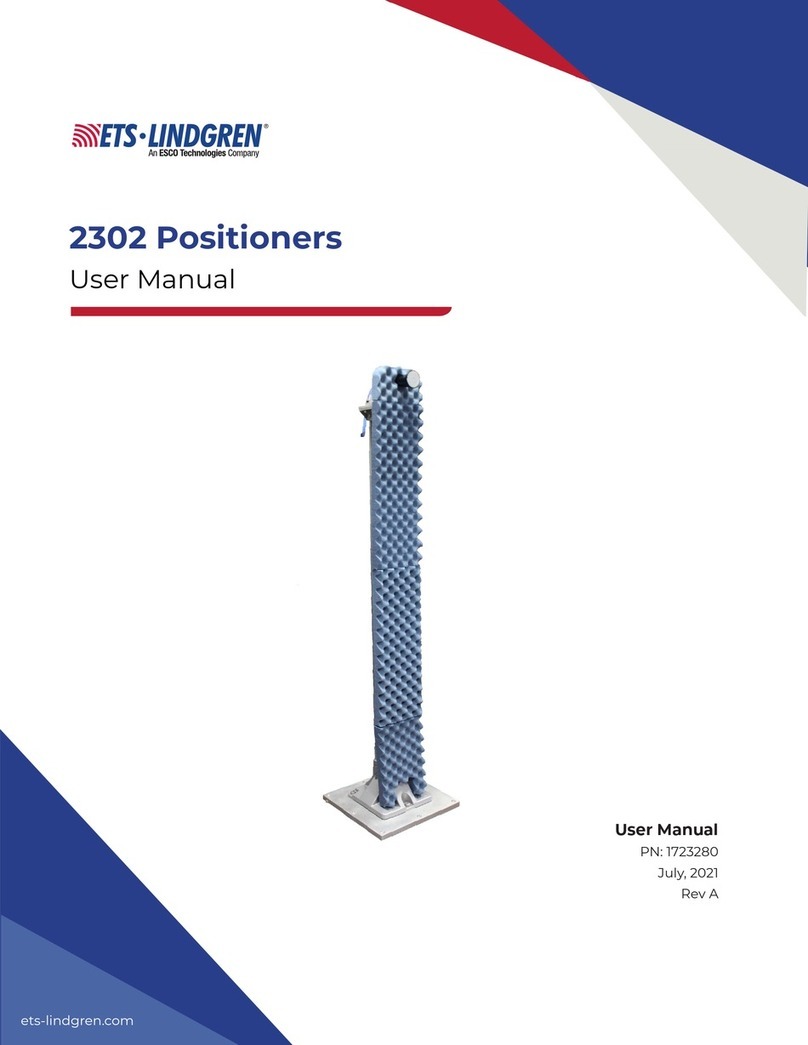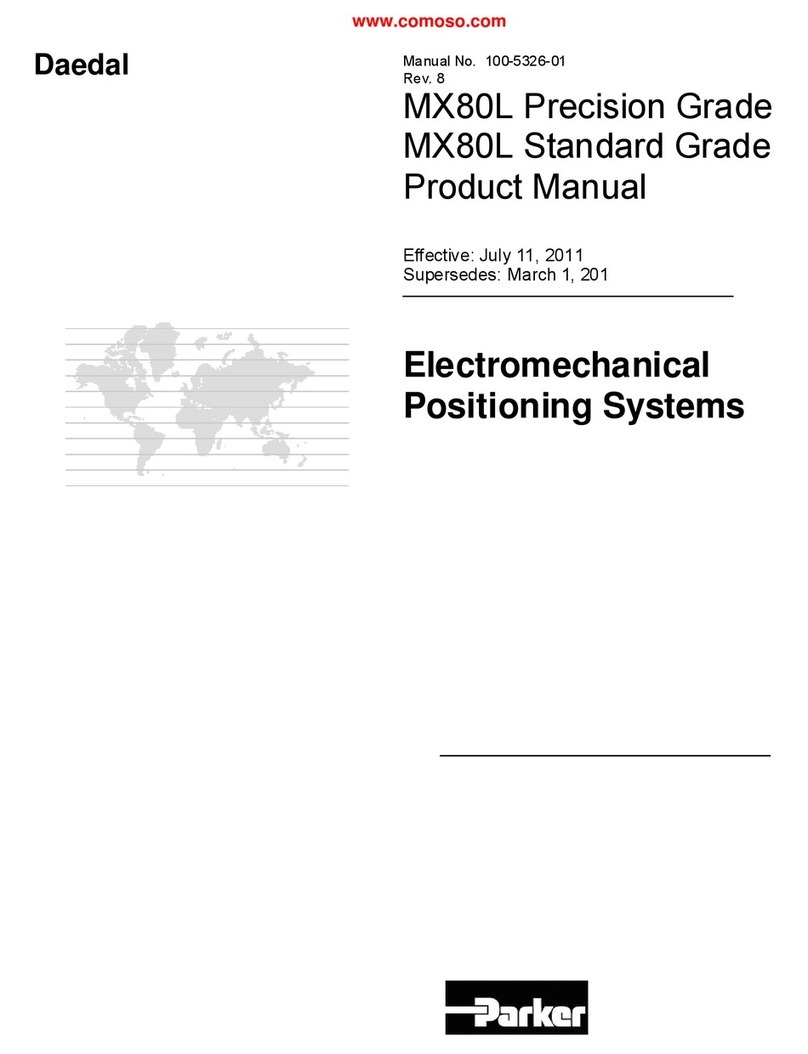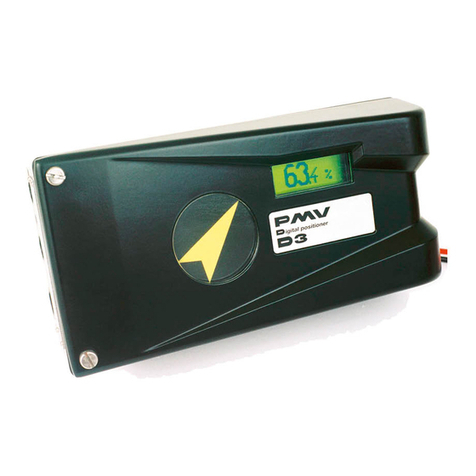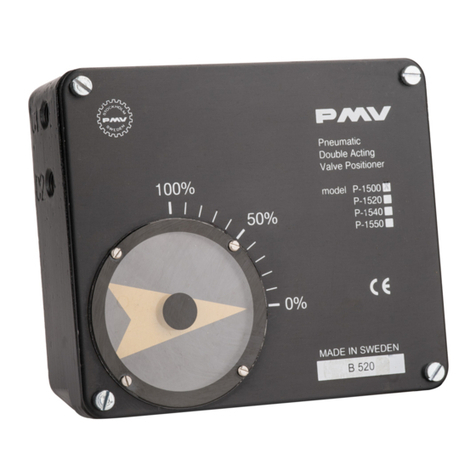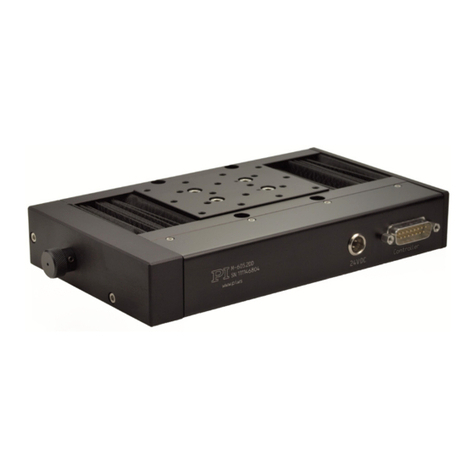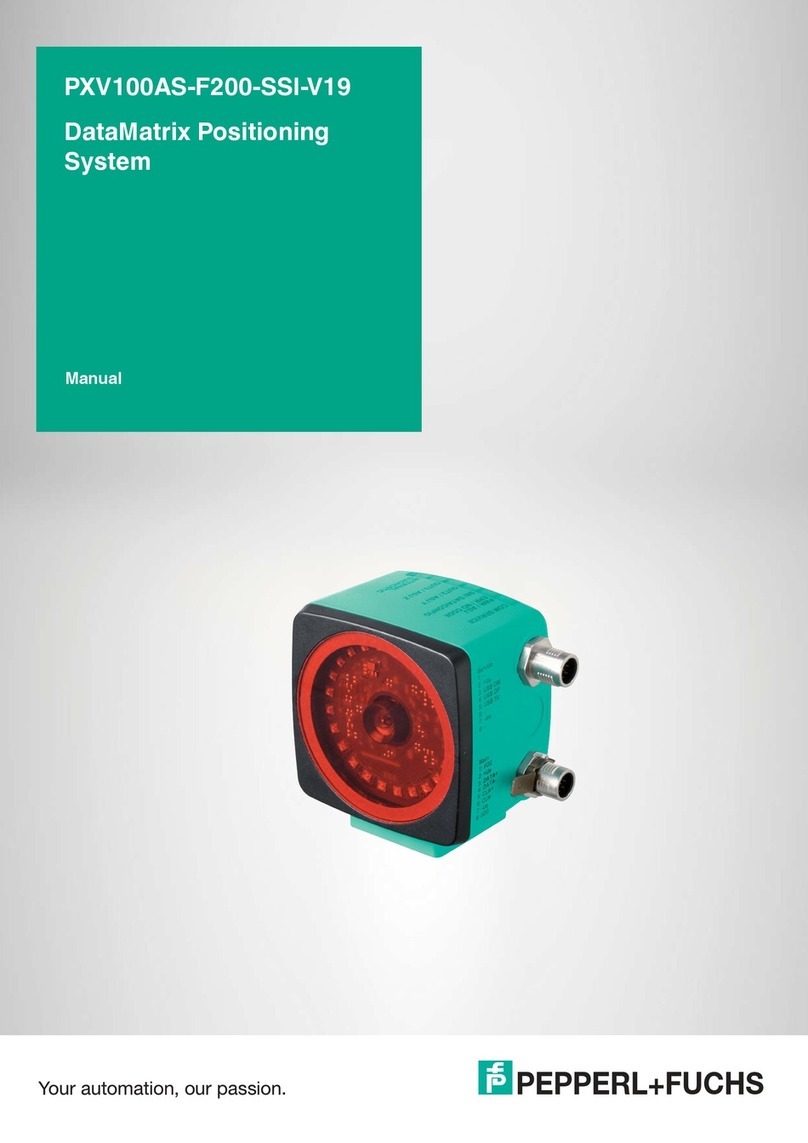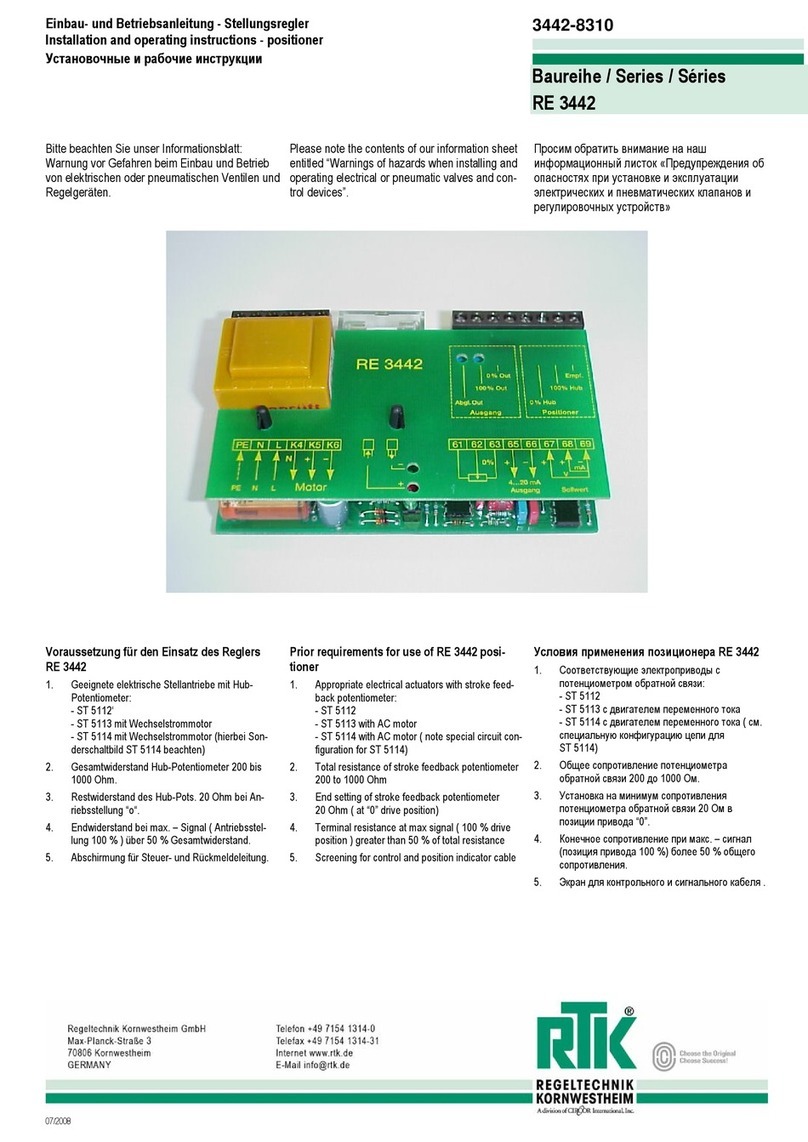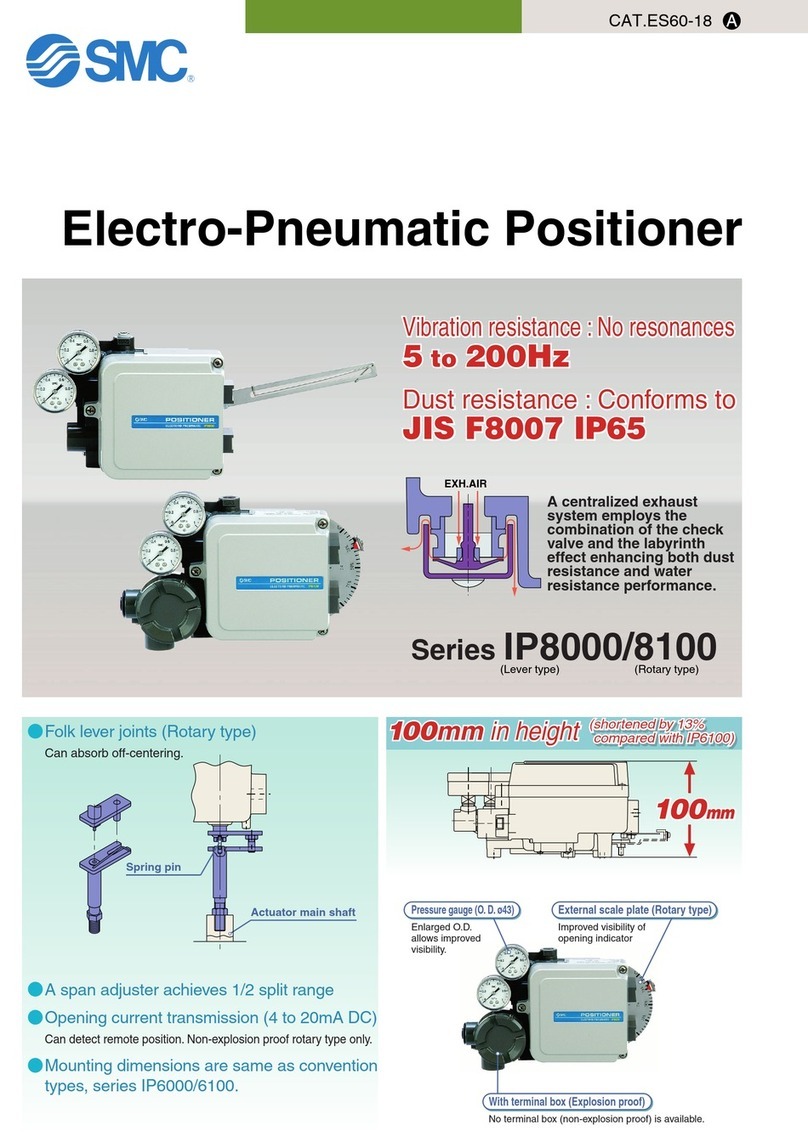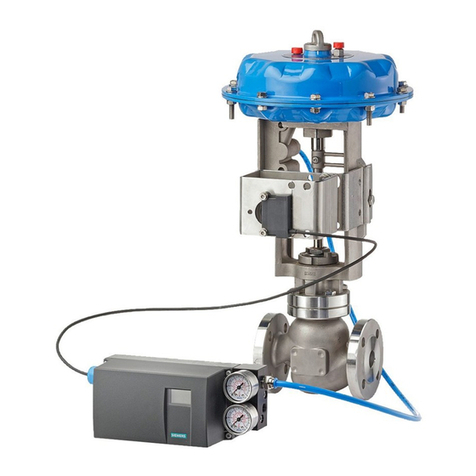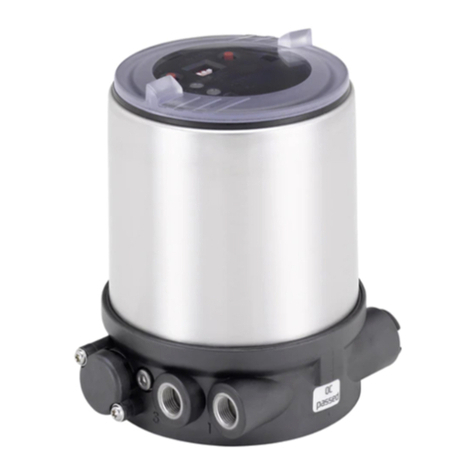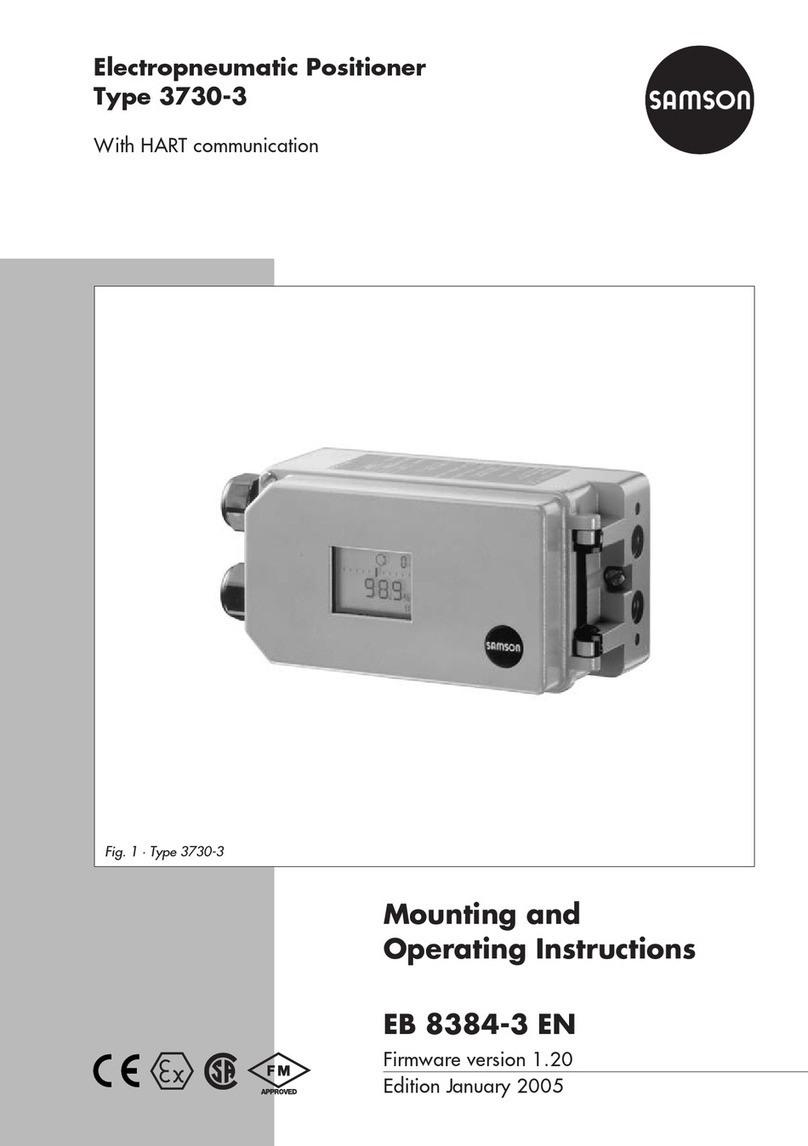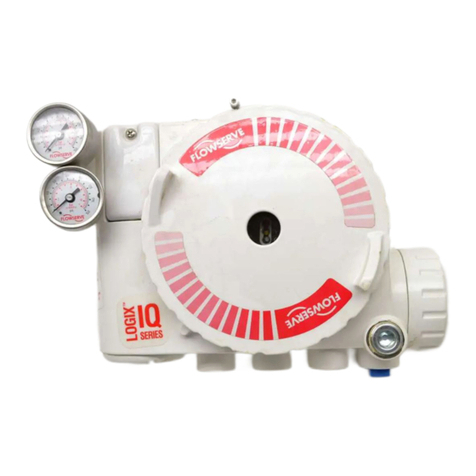
– 5 –
Manual
Function
.
The PMV E/P Positioner function is based on torque
balance. Direct current, 4-20 mA or 0-20 mA acting as
input signal creates, in the force coil (53) in the per-
manent magnet (50) eld, a force proportional to the
signal and, on the beam (92), a corresponding torque
The position of the cylinder (C) piston is converted
by means of the feedback linkage (L), cam (42), lower
arm (21) and spring (40), to a force proportional to the
position of the cylinder (C) piston and, on the beam
(92) a counter torque. When in balance, the cylinder
position equals the input signal value.
The nozzle (114) without friction senses the balance of
the beam (92). When, for example, the signal is increased
thetorquecorrespondingto thesignal onthe beam (92)
will increase and the beam (92) will turn clock-wise.
The nozzle (114) closes, and the nozzle pressure in-
creases. The diaphragm assembly moves downwards
as does the spool (68) of the pilot valve activated by the
balancearm (57). Supply airows through connection
C2 andairfrom the ”minus” chamberofthe cylinder(L)
is exhausted through connection C1.
Differential pressure is created in the cylinder, and the
piston will travel ”plus” until the torque change on
the beam (92), created by the piston position change,
rebalances the beam (92) positionand the nozzle pres-
sure. The diaphragm assembly will return to equili-
brium position with the balance arm (57) guiding the
spool (68) to mid position. The piston of the cylinder
(C) will stop in the position corresponding to the new
input signal.
A change in position ofthe balance arm (57) creates,
through the spring (93), anegative feedback torque on
the beam (92). Stable operationis thus achievedin spite
of possible great static amplication or sensitivity. The
position of the spring (93) can be changed along the
beam (92) and the balance arm (57) in order to adjust
positioner gain, and thus the dynamics of the positioner.
The positioner can be adjusted to match any small or
large actuator.
The lower arm (21) has a mechanism for zero adjust-
ments. The beam (92) has the mechanism for adjusting
the range. To reverse the positioner action the cam (42)
is ipped over and the pipe cormections C1 and C2
are interchanged.
Splitrangeisavailablebychoosingtherightcurveonthe
cam (42). Non-linear function is achieved by reshaping
the cam (42). Such cams are available from PMV.
The PMV E/P Positioner can also be used as a single
acting positioner by simply plugging one of the
ports C1 or C2.
